Chapter 5
Measurement noise
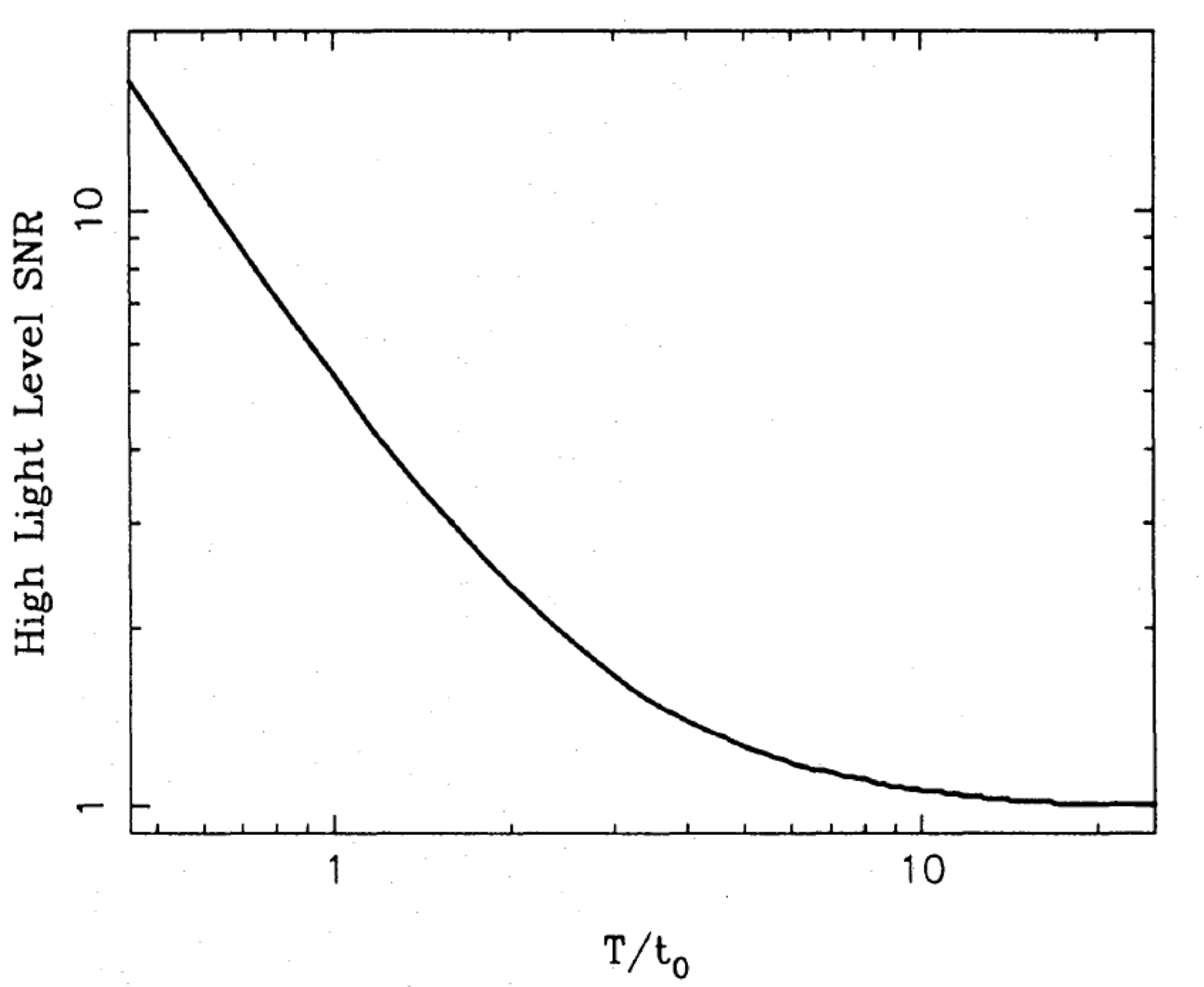 |
Figure 5.1:
The SNR of atmospheric-noise-limited measurements of fringe amplitude as a function of exposure time. The SNR is defined as the mean squared visibility modulus divided by the standard deviation of the squared modulus. From .
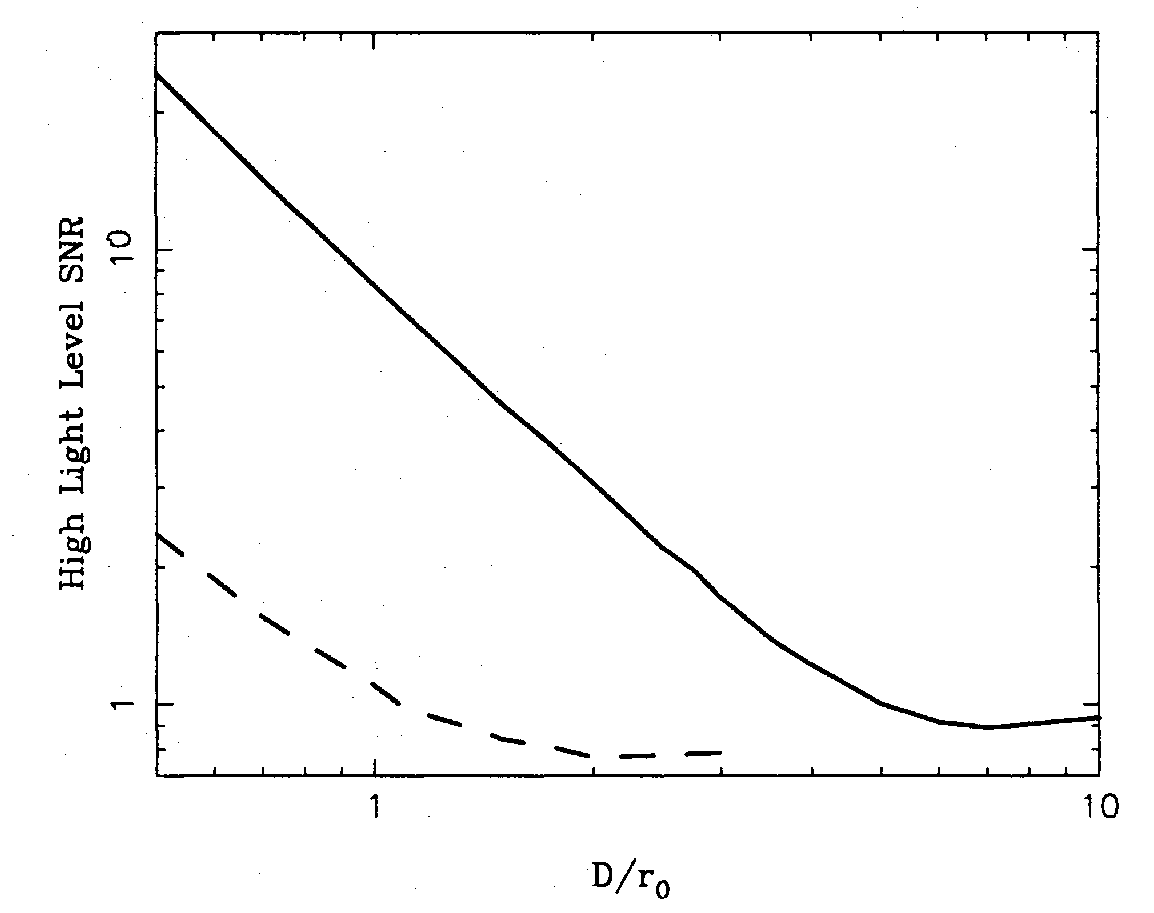 |
Figure 5.2:
signal-to-noise ratio for atmospheric-noise-limited observations through apertures of different diameters (from ). The solid line corresponds to a tip-tilt corrected aperture and the dashed line to an uncorrected aperture.
Figure 5.3:
Sample bispectrum values plotted on an Argand diagram. The values were measured using aperture masking on a bright point source (α Boo) with sub-r0 subapertures. The scatter is larger in the direction parallel to the mean bispectrum value than in the perpendicular direction, suggesting that the exposure time used was much greater than t0. From
.
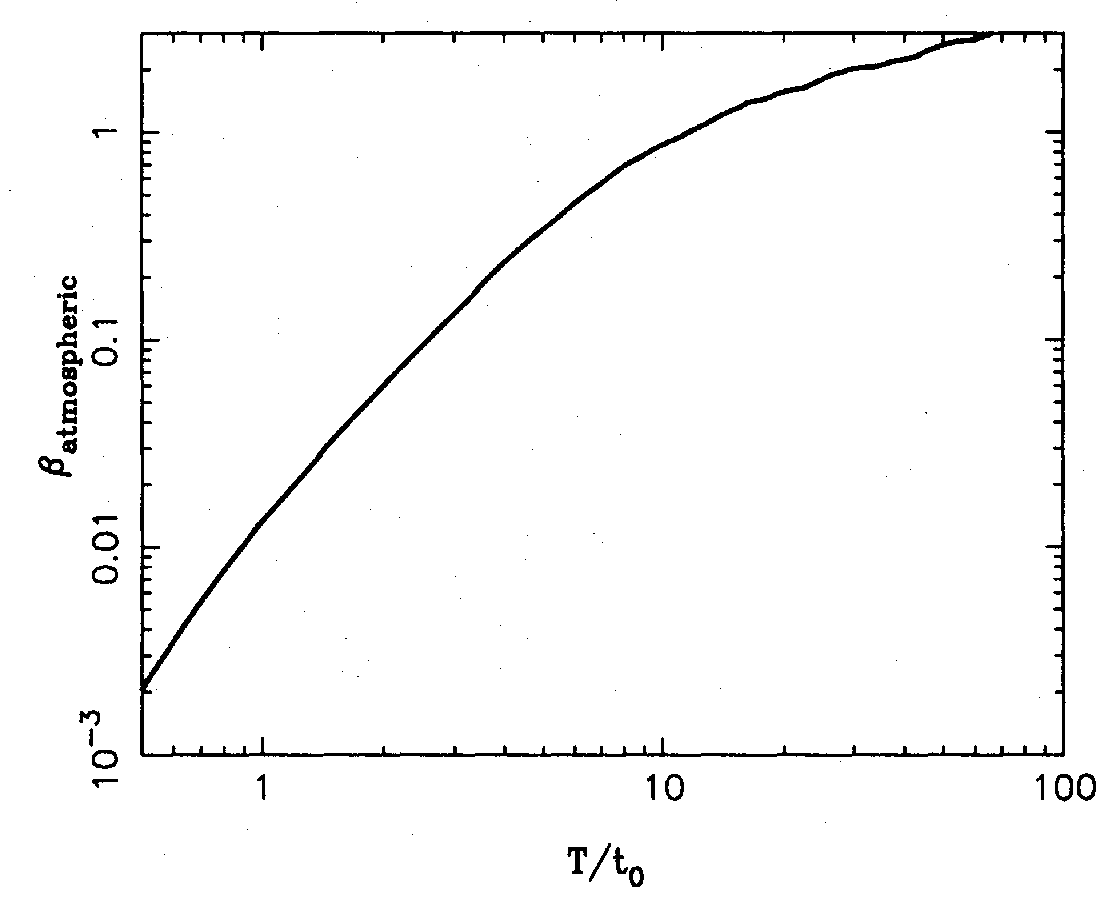 |
Figure 5.4:
The phase error σϕ on the bispectrum as a function of exposure time for atmospheric-noise-limited measurements. From .
 |
Figure 5.5:
The phase error σϕ on the bispectrum as a function of aperture diameter for atmospheric-noise-limited measurements. The dashed line is for no adaptive optics correction and the solid line is for tip-tilt correction. From .
|
|
Figure 5.6:
The signal-processing chain for a single pixel of a photoelectric detector. Light enters as photons on the left and exits as a digitised electrical signal on the right. ADC stands for analogue-to-digital converter. SVG file: pixel-signal-chain.svg
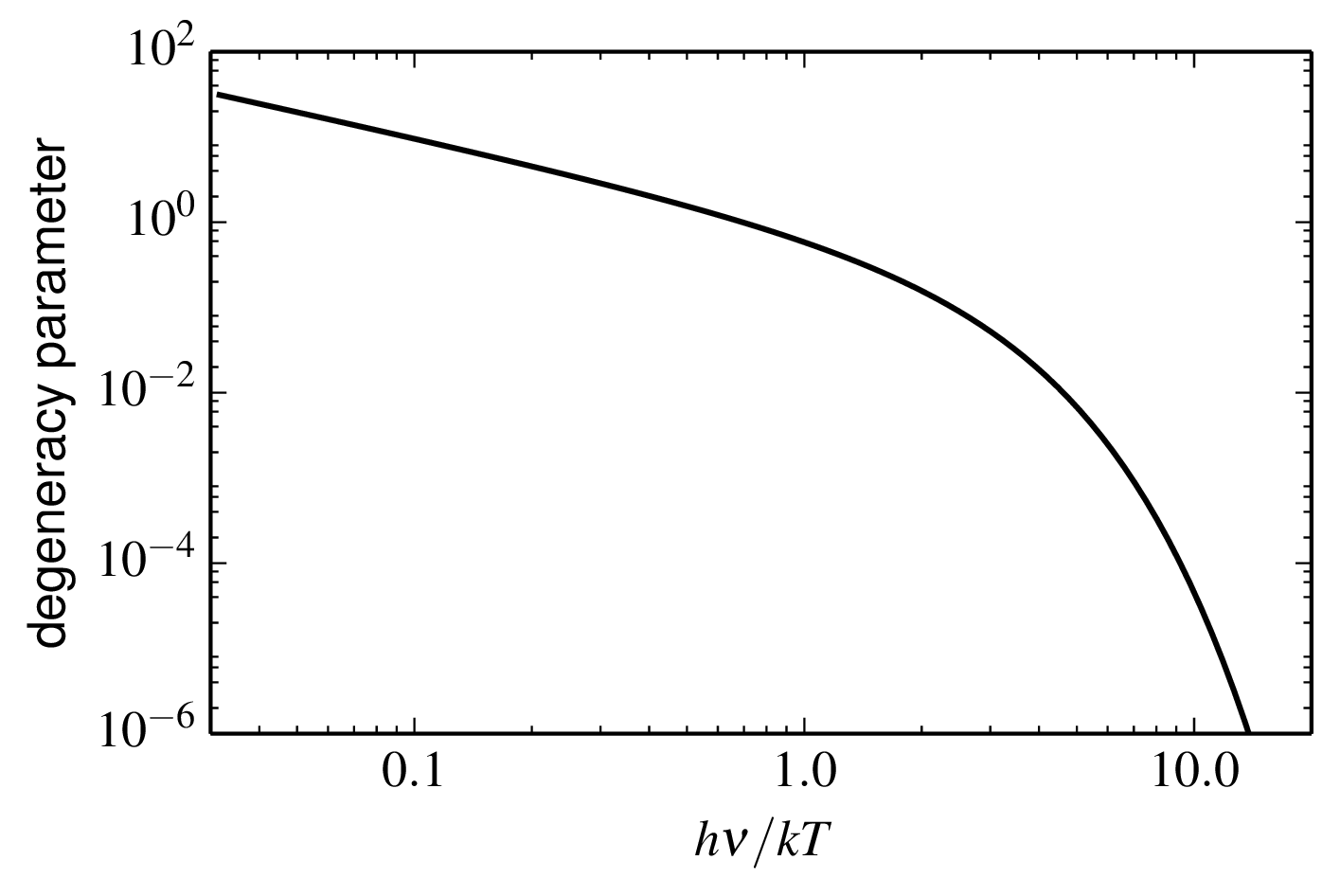 |
Figure 5.7: The photon degeneracy parameter (photons per unit frequency per unit time in a single spatial mode) for thermal radiation at frequency ν from a black body at temperature T. Python file: degeneracyparameter.py
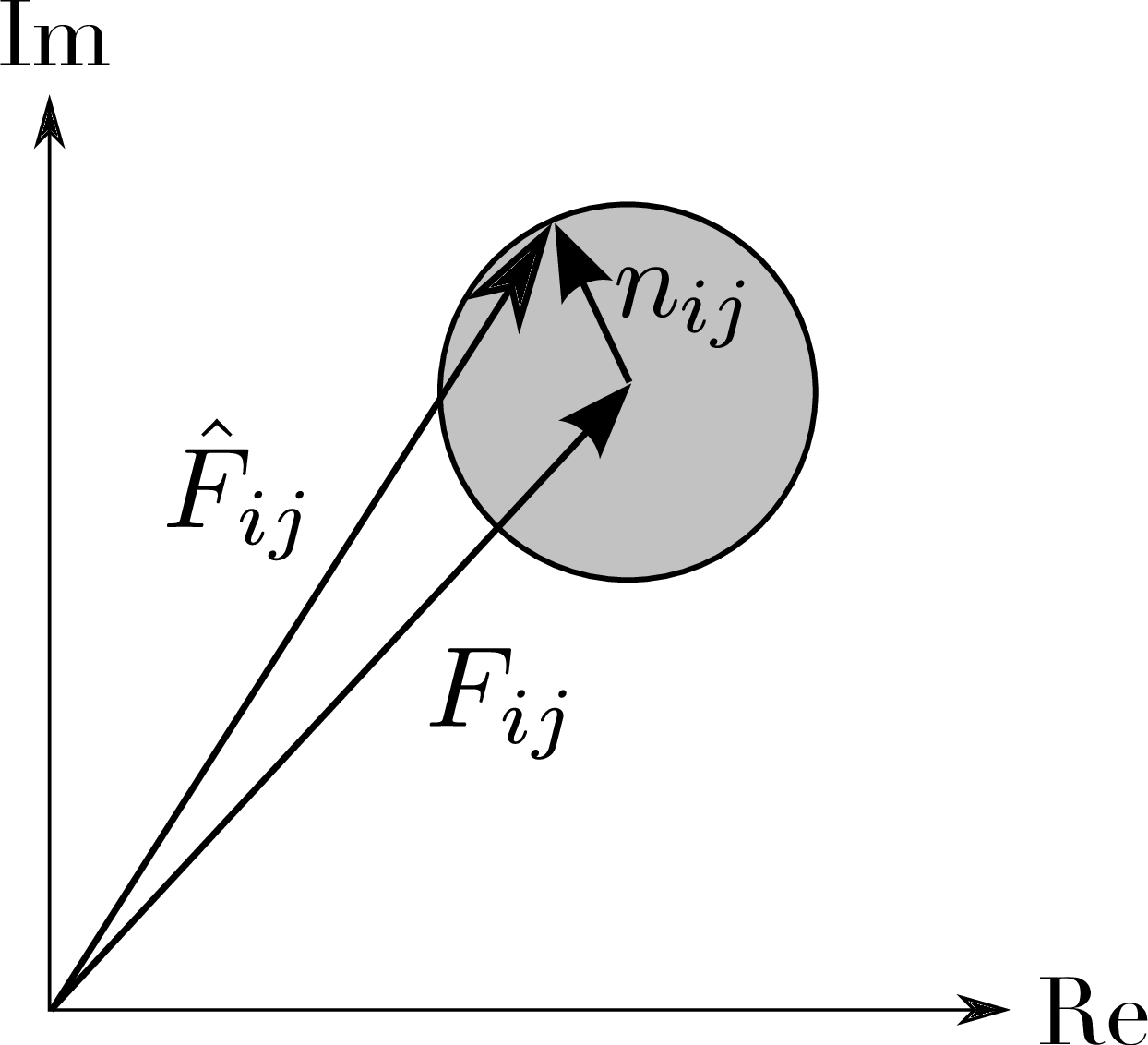 |
Figure 5.8:
Argand diagram representation of the estimator ∧Fij for the fringe coherent flux as a sum of the true coherent flux Fij and the complex noise nij. It can be seen that the complex noise gives rise to both amplitude and phase errors in the estimate. SVG file: noise-vector.svg
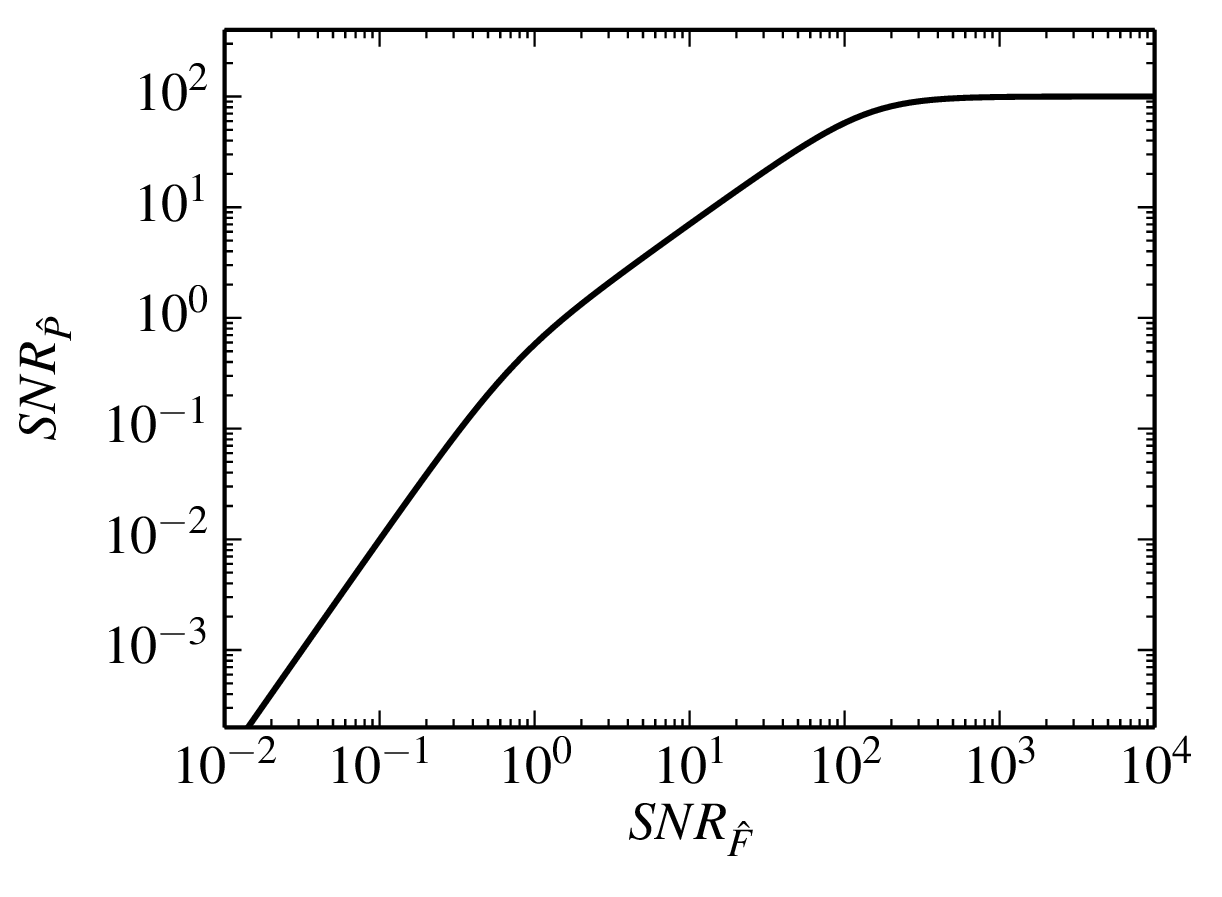 |
Figure 5.9: The signal-to-noise ratio of the power spectrum as a function of the signal-to-noise ratio of the coherent flux. The atmospheric-noise-dominated signal-to-noise ratio has been assumed to be of order 100. Python file: powerspectrum-scaling.py
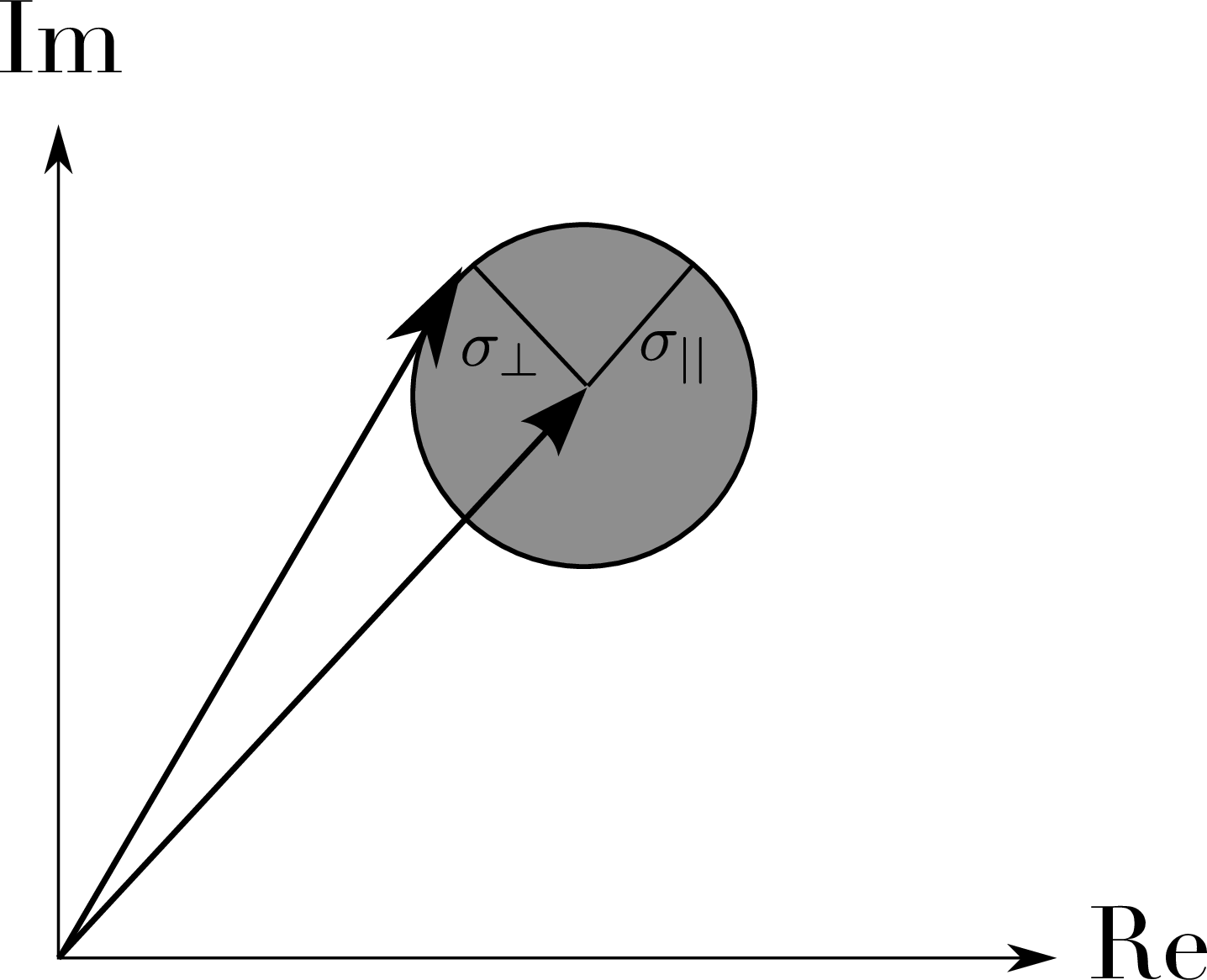 |
Figure 5.10:
Schematic diagram of the noise on the bispectrum. SVG file: bispectrum-noise.svg
